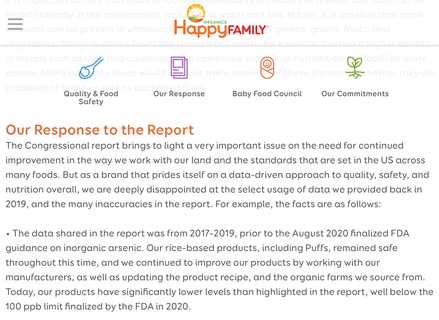访问学者研修计划怎么写?
 彼以利合
彼以利合 夜碎
夜碎
去百度文库,查看完整内容>内容来自用户:三一素材 【篇一】 本人在国内长期从事计算机以及相关领域的教学工作,此次申请出国留学,准备继续从事与我的教学背景相关的研究工作。初步计划选择研究课题为“开源操作系统在嵌入式系统中的应用”。 目前,嵌入式技术的发展方兴未艾,智能电子产品不断涌现,开源操作系统作为其研究方向之一,具有良好的发展前景,目前我国在此领域尚且处于起步阶段,而同类项目研究和设计在国外已趋于成熟,开源产品和开源代码资源丰富,研究方向处于前沿地位。 本次申请选择挪威为留学目的地,基于以下原因:地处北欧的挪威是欧洲的发达国家之一,其高等教育发达,全国有20余所高校,在信息领域具有发展优势,挪威是世界上大力支持开源软件的国家之一,其第二大城市卑尔根是挪威最有名的使用开源软件的城市之一。 本人已经从事嵌入式技术相关课程的教学工作三年之久,此次申请公派留学,选择的学校是######college,该校已经有多年嵌入式技术教学的成功经验,尤其在机器人领域有丰富的设计成果,与我目前的研究方向非常相符。目前我校尚无与挪威高校的合作基础及业务联系,如果留学成功,希望我可以作为开拓者,与国外同行进行广泛的交流,提高科研与教学能力。 本次留学申请,选择前往挪威的作为期
如何写访问学者研修计划?
 相对
相对 同焉者和
同焉者和
你好,厚谱教育(访问学者申请领跑者)资深顾问为你解答。 申请国外访问学者需要提交如申请信、个人简历、推荐信、研修计划等材料,其中访问学者研修计划书尤为重要。只有你申请的教授对你的研究课题感兴趣了,才能够顺利的拿到访问学者邀请函。访问学者研修计划书应包含以下内容:1.选择申请该导师进行访学的原因;2.出国访学目的、预期目标、计划、实施方法及所需时间;3.研究课题在国内外研究情况及水平和应用情况;4.达到本次出国访学预期目标的可行性;5.学成归国后的工作和学习计划。 申请者要尽量注意研修计划书写格式是否规范、观点是否明确、层次是否清晰、语言是否精炼,言简意赅的阐明自己的学术观点、学习预期目标、科研方法及科研工作时间安排等,并恰到好处地表达出希望国外导师给予指导的愿望。研修计划字数不宜过多,以一页到两页为宜。长篇大论的叙述并不能给自己的研修计划加分,反而会使导师无法对你的研究目的、研究重点一目了然,甚至放弃继续阅读你的申请材料,起到适得其反的作用,另外,研修计划的英文书写要语法规范,词语使用恰当并符合国外的语言习惯。严谨、准确的英文表达是你的研修计划获得国外导师青睐的保障之一。 研修计划中还应充分体现个人的英语水平。英语水平是申请者在有限的国外研究期间,能否顺利完成研究目标的重要因素之一。国外导师在选取博士研究生时,除考察申请者个人的专业知识、研究水平外,大都倾向于选取英语水平相对高的学生进行指导。把握以上重点,写出好的访问学者研修计划,你的国外访学之路也就向前迈出了一大步,后续的申请工作也将更加顺利。 以上回答希望对你有帮助。
访问学者研修计划?
 地下情
地下情.jpg) 谨修而身
谨修而身
这个啊 ,这方面我有点了解,主要是以下几点吧,你看看1.选择申请该导师进行访学的原因;2.出国访学目的、预期目标、计划、实施方法及所需时间;3.研究课题在国内外研究情况及水平和应用情况;4.达到本次出国访学预期目标的可行性;5.学成归国后的工作和学习计划。哦,对了,以上内容来源厚谱教育
哪里有国外访问学者研修计划模板?
 包以四夷
包以四夷 而犹浸灌
而犹浸灌
你好,厚谱教育(访问学者申请领跑者)资深顾问为你解答。Topic: This research proposal suggests research on how the level of self-disclosure effects the degree of relationship satisfaction. Review of Literature: Guerrero & Afifi (1995) concted a study to examine topic avoidance and self-disclosure in family relationships. They found that males reported avoiding discussion of relationship issues more than females did. As Martin&Anderson(1995)sought to examine the motives behind self-disclosure in father-young alt relationships and the resulting level of relationship satisfaction, their study found that young alts seem to model their self-disclosure after their fathers' self-disclosure. Pegalis, Shaffer, Bazzini, & Greenier (1994) examined the generality of the opener effect to males and females across different situational contexts. They found that both genders disclosed more and longer to high openers than to low openers across the different contexts, Leaper, Carson, Baker, Holliday, & Myers (1995) used both same- and opposite-sex dyads in order to examine the relationship between listener verbal support and self-disclosure among friends. They found that females tended to be more responsive and supportive than males ring discussions in both same- and cross-gender friendships. However, it was also found that men made more disclosing comments than did women, indicating that it is possible for males to disclose as much as females. They also found that imbalances in self-disclosure and verbal support are related to relationship dissatisfaction. Drawing on these findings, it could be possible to anticipate that indivials who have similar patterns of self-disclosure would have higher degrees of relationship satisfaction. Continued research may further explore what other factors affect the degree of relationship satisfaction. Research Question: What effect does the level of self-disclosure have on the degree of relationship satisfaction? Hypothesis: Indivials who experience similar levels of self-disclosure will be more likely to have higher degrees of relationship satisfaction. Method: In congruence with the previous study concted by Martin & Anderson (I 995), a design involving approximately 200 undergraate students, I 00 male and I 00 female will be used. They will complete questionnaires consisting of measures of self-disclosure and communication satisfaction. They will also be given a questionnaire to have their significant others complete. This questionnaire will include the same measures. Participants will be informed that this research study focuses on self-disclosure and levels of relationship satisfaction, participation is voluntary, and their responses will be kept confidential. A self-addressed envelope will be enclosed to assist in confidentiality. Participants will complete the Self-Disclosure Scale (SDS) and the Communication Satisfaction Scale (CSS). Their responses will be compared with those of their partner's in order to assess the similarities between the pair's levels of self-disclosure to each other and their degree of relationship satisfaction. Participants will also be given a second questionnaire, which will ask them to assess what they believe to be their partners' level of self-disclosure and degree of relationship satisfaction. These responses will also be compared to examine whether indivials' self-reports of their levels of disclosure and satisfaction match up with what their partners believe their levels to be. Predictions: In response to the study done by Martin & Anderson (I 995), it should become clear that the amount of self-disclosure that occurs between indivials affects the relational satisfaction that is felt by both parties. Leaper et al. (1995) found that imbalances in self-disclosure and verbal support are related to relationship dissatisfaction. This would seem to indicate that the opposite would be true, as well. So, it may be found that indivials who experience similar levels of self-disclosure will have higher degrees of relationship satisfaction. A possible problem using the methods chosen is that self-report may not be entirely accurate. People may not truthfully portray their levels of self-disclosure and relational satisfaction. However, through the use of confidentiality and the second questionnaire that asks the partners to assess each other's levels, it is hoped that the potential for this problem may be decreased. References Guerrero, L., & Afifi, W. (Summer 1995). Some things are better left unsaid: Topic avoidance in family relationships. Communication Quarterly, 43, 276-296. Leaper, C., Carson, M., Baker, C., Holliday, H., & Myers, S. (1995). Self-disclosure and listener verbal support in same-gender and cross-gender friends' conversations. Sex Roles: A Journal of Research, 33. 3 8 7-405. Martin, M., & Anderson, M- (Spring 1995). The father-young alt relationship: Interpersonal motives, self-disclosure, and satisfaction. Communication Quarterly, 43, 119-130. Pegalis, L., Shaffer, D., Bazzini, D., & Greenier, K. (1994). On the ability to elicit self disclosure: Are there gender-based and contextual limitations on the opener effect? Personality and Social Psychology Bulletin, 20, 412-420.以上回答希望对你有帮助。
访问学者签证需要研究计划吗?
 乃愤吾心
乃愤吾心 气化
气化
1、一般来说还是需要,访问学者签证还需要研修计划。2、如果访问学者有研修计划则容易获得签证而不容易被拒签,所以最好还是提供研修计划。访问学者去美国的话签证类型是J1,英国的话是AV或者T5,加拿大是工作签证,其中有的需要研修计划,所以还是准备好吧。另外,申请访学的过程中也可能用到,所以准备好有备无患。
访问学者)如何撰写赴国外留学的研修计划
 百花香
百花香怎么写研究水平,学术发展潜力,出国研究方向和研修计划进行评估
 是以不敢
是以不敢 华封人曰
华封人曰
根据教育部关于印发《高等学校“高层次创造性人才计划”实施方案和有关实施办法的通知》精神和我校师资队伍建设“十二五”发展规划总体思路,围绕建设特色鲜明的高水平研究型大学目标,为追踪学科(专业)发展前沿,提高我校青年骨干教师的学术水平和教育教学能力,结合我校实际情况,制定《东北林业大学青年骨干教师出国研修计划(试行)》。 一、指导思想 东北林业大学青年骨干教师出国研修计划以国家留学基金管理委员会(以下简称留学基金委)与我校合作开展的“青年骨干教师出国研修项目”为基础,进一步加大青年骨干教师海外培训力度,加快教师队伍国际化进程,推进我校实施“人才强校”战略,培养一批在学校各学科(专业)领域内起骨干作用的学术带头人后备人选。 二、选派计划 (一)选派范围 主要从我校中青年学术带头人后备人选和优秀年轻骨干教师中选拔;优先资助“211工程”重点建设学科(专业)和语言类教师。 (二)选派规模 根据学校与留学基金委签订的协议及我校师资队伍建设“十二五”发展规划,学校计划每年选拔20名左右青年骨干教师出国研修。 (三)选派类别及留学期限 (1)访问学者;留学期限为6-12个月; (2)博士后研究;留学期限为12个月。 出国访学的期限一般要求应为12个月,其中语言类教师出国访学、研修的期限不超过6个月。 (四)留学国别(地区) 教育、科技发达国家和地区。 三、资助内容 学校与留学基金委联合资助内容包括一次往返国际旅费及在外期间的奖学金生活费。赴英国的访问学者可申请1000英镑以内的Benchfee。奖学金资助标准及方式按照留学基金委现行的有关规定执行。本项目所需经费由留学基金委与学校共同负担,超出奖学金资助部分发生的费用由选派人员个人承担。 四、申请条件 (一)热爱祖国,热爱社会主义,具有良好的政治和业务素质,无违法、违纪记录,在工作、学习中表现突出,学成后回国为祖国和学校发展建设服务; (二)应具有坚实而系统的专业基础理论知识和丰富的教学、科研实践经验,教学质量优秀,科研业绩突出; (三)须在本校工作满3年,年龄不超过40周岁,具有博士学位或受聘副教授(副研究员)岗位; (四)申请时原则上须有明确的国外合作对象或已取得拟赴国外高校或科研机构的正式邀请函; (五)外语成绩达到合格条件的申请人员,在选派时学校优先考虑;外语成绩未达到合格条件者,可提供反映其外语水平的考试成绩证明进行申报,此部分人员被录取后,需参加相关外语培训并获得合格成绩或在此期间参加“全国外语水平考试”(WSK)并达到合格标准后,方可派出; (六)“教育部新世纪优秀人才支持计划人选”、“东北林业大学青年拔尖人才支持计划人选”、“东北林业大学青年骨干教师引进计划人选”优先列入本研修计划;已受学校资助公派出国留学人员,不再受本计划资助。 五、选拔办法及申请受理时间 (一)选拔方式 遵循“公正、公平、公开”原则,采取“个人申请、基层单位选拔推荐,学校审核,留学基金委负责审批”的方式进行。各单位应按照学科(专业)建设发展及人才培养梯队建设需要审定申报人员所制定的研修计划,遴选排序推荐优秀青年骨干教师,学校根据单位推荐排序并结合学校整体发展和人才培养需求最终确定资助人选。 (二)申请受理及派出工作安排 (1)初审:学校发布申报通知,受理各单位及个人填报材料,进行资格审查,时间为每年12月初; (2)确定资助人选:学校根据单位推荐排序并结合学校整体发展和人才培养需求最终确定资助人选,时间为每学年第一学期末; (3)外语培训:确定的资助人选中有未达到留学基金委派出外语要求的人员需参加“全国外语水平考试”(WSK)并达到合格标准或赴教育部出国留学人员培训部进行外语培训; (4)学校负责审核、录取及申报:学校根据申报个人提供的国外院校或科研机构邀请函(含意向性)及外语水平合格证明确定申报留学基金委人选,时间根据留学基金委通知安排确定; (5)留学基金委确定录取人员:留学基金委审核申报材料后公布录取人员名单,时间为每年11月左右; (6)派出:符合派出条件的被录取人员凭我校开具的派出证明即可与教育部留学服务中心联系办理派出手续。申报个人根据各单位工作安排及邀请函时间尽快确定时间出国研修。 六、派出管理、考核及其他 (一)按照国家留学基金委的要求,为使被选派人员能及时派出,请各单位及申请人员根据工作需要,妥善安排好培训和出国期间相关学习和工作任务; (二)被录取人员派出前应签订教师出国研修计划合同,办理出国(境)审批表及交存保证金等派出手续; (三)被留学基金委录取人员应在6个月内出访,超过6个月,除特殊情况外,学校将取消其出国研修资格,改派他人; (四)受资助人员不得随意放弃受资助资格,须按照留学基金委管理要求出访,出国期满需按时返校报到; (五)出国人员办理完护照、签证等手续并获得留学基金委的离境机票后,在离校前将出国时间报告学校人事与专家工作处教师与专家办公室。如离境前仍未告知而擅自离境,学校将按照有关规定处理; (六)派出期间管理: (1)派出人员应以严肃认真的态度合理制定在外访学、研修计划,紧凑安排学习任务,密切联系对方院校(科研机构)合作导师,确保研修质量,尽快提高业务素质; (2)派出人员抵达留学所在国(地区)后,一个月内将入学证明、居住地址告知人事与专家工作处; (3)派出人员在外期间应每月以书面形式向学校汇报思想动态、学习进展以及专业领域从事研究开展情况等; (4)学校不定期与对方合作导师取得联系,了解派出人员工作、学习及生活情况,一经发现有思想不端、违法乱纪、松懈懒惰、长时间未与导师联系等现象,学校会根据具体情况上报留学基金委,直至终止对派出人员资助并取消其余下出国期限; (七)回国考核: (1)期满回国人员应提供带有对方合作导师签名的出国期间个人表现鉴定书; (2)回国人员撰写出国期间学习总结和学术成果报告(附学术成果); (3)所在单位根据回国人员的出国期间个人表现鉴定书、鉴定意见,结合回国人员完成出国前研修计划情况进行综合审核,并签署意见后报人事与专家工作处; (4)回国人员应分别以出国期间研修学科(专业)领域专业知识,出国期间业务总结、感想和体会为主题在本单位作学术报告; (5)留学回国人员应具备承担双语教学的能力。 对于回国考核不合格人员,学校不再资助任何形式的出国研修、访学,并将此次出国经历视为无效。 七、本办法由学校人事与专家工作处负责解释。 八、本办法自颁布之日起施行。 教师出国研修计划二:优秀青年教师出国进修计划 一、目的 按照“一流学校、一流师资、一流课程”的原则,学校选派优秀青年教师至国外知名高校,学习本专业前沿课程,拓宽国际学术视野,孵化国际化课程。派出教师应根据学科建设需要,结合个人学术研究方向,设定学术发展规划,积极投身教学科研工作,在较短时间内成为学术骨干。 二、任务 1、派出教师以旁听形式全程学习一门本科高年级或研究生专业课程,进修结束回校后用于教学研究。 2、派出教师在外进修期间,应参加一次高质量的国际研讨会,了解相关领域的最新发展。 3、派出教师应利用国外学术资源,为已(拟)承担的科研项目做好资料收集等工作。 4、派出教师应积极协助学校物色、联系引进人才的人选。 三、要求 1、派出教师在进修结束回校后,应向所在单位汇报进修成果,并提供课程考勤证明及参加国际研讨会的邀请函。 2、派出教师在进修结束回校后,应通过学校组织的出国进修成效考核。 3、派出教师在派出前应与人事处签订派出进修协议,在进修结束回校后应完成协议规定的服务期限。该服务期限不能抵冲派出教师原先与人事处约定的其它服务期限,两者应累加计算。 四、名额与期限 自2001年至2013年,学校每年选派1—2名优秀青年教师至国外知名或一流高校进修。进修派出分春季和秋季两期,每期5—6个月。 五、年龄 派出教师的年龄原则上在40周岁以下。 六、待遇: 1、学校全额保留派出教师在外进修期间的每月岗位工资和薪级工资。 2、派出教师通过出国进修成效考核后,学校向其发放在外进修期间50%的每月校内基本岗位津贴。 3、学校向派出教师提供一次经济舱往返国际机票和办理护照、签证等费用。 4、学校向派出教师提供1,000美元学习补贴(按汇率以人民币支付)。 5、派出教师若未通过出国进修成效考核,或违反派出进修协议,学校将视情要求其返回全部或部分学习补贴。 七、选派程序 1、每年3月初,教师经学校批准后报名申请,并提交出国进修计划。 2.每年4月初,学校组织遴选小组对申请人员进行遴选,确定派出人选。 3.每年4月起,派出教师落实前往进修的国外高校,完成国内相关报批手续,办理签证等事宜。 4.每年8月后或次年2月后,派出进修。 八、其它 20xx年起,本计划的实施视学校学科建设与发展的需要确定。 教师出国研修计划三:“青年教师出国研修计划”实施办法 一、总则 第一条为贯彻落实学校“人才强校”工作会议精神,提升学校教师队伍学术水平,加快学校国际化进程,根据国家有关政策,结合学校近年来出国留学选派工作实际,决定实施“青年教师出国研修计划”。 第二条本计划旨在通过多种渠道和方式在三年内(2009年1月1日~2011年12月31日)选拔200名左右青年教师到国外知名大学、学术机构进行研修学习,拓展学术视野,加快自身发展。同时推进学校与国外大学建立广泛的联系,开展经常性学术交流活动。 第三条本计划遵循公开、公正、透明的原则。按照个人申请、学院推荐、学校审批、签约派出、违约赔偿的程序组织实施。 二、研修类别与选拔条件 第四条研修类别 研修类别为:高级访问学者、访问学者(含博士后研究)、攻读博士学位、合作研究、进修人员等。 第五条派出方式 派出方式分为国家公派和单位公派两类。 国家公派指经学校推荐,列入国家选派计划,获得国家留学基金资助的留学人员。 单位公派指按照我校师资队伍建设规划选拔,经学校审批,由学校资助赴国外进行研修的留学人员。 第六条申请人应具备的条件 1.热爱祖国,品德优良,身心健康,具有团结合作精神,有学成回国为学校建设服务的事业心和责任感。 2.年龄一般在45岁以下,具有较高的学术水平和较强的业务能力,学术思想活跃,有固定的研究方向和明确的学术目标。 3.具有一定的外语听、说、读、写能力,能够用外语进行本学科的学术交流。 4.申请公派出国留学人员除符合以上条件外,还须具备选派部门或接收方的具体规定。 三、计划实施程序 第七条制定计划 1.学校制定3年出国计划,各学院编制年度派出计划(一定三年):以工科为主的学院以本单位45岁以下专任教师人数的8%推荐拟派出人员;以理学和社会科学为主的学院以本单位45岁以下专任教师人数的5%推荐拟派出人员,经学校评审批准后列入本计划入选人员。入选人员和所在学院做好出国前期准备工作,保证人员按时派出。 2.列入学校“青年教师出国研修计划”的人员,学校人事、外事部门和所在单位将努力创造条件,分期组织外语培训和考试,并协助个人通过各种途径积极联系、落实国外接收单位。 第八条派出渠道 1.本计划资助人员的35%通过学校与国家留学基金委签订的协议派出(如:“全额资助”、“西部项目”、“青年骨干教师1:1配套项目”等国家留学基金委出国留学项目)。 2.本计划资助人员的65%以单位公派形式派出。 个人联系国(境)外接收单位并获得对方资助,在收到外方的入学通知书或邀请信后,可向本单位提出单位公派出国留学申请。经所在单位同意报学校批准后,纳入该计划。 第九条出国研修人员的派出 1.国家公派留学人员,按照国家留学基金委相关政策派出。 2.单位公派留学人员按照“签约派出、违约赔偿”的办法管理。 各单位应积极协助拟出国留学人员联系国外接收单位,在收到外方邀请信后,及时做好工作安排,督促申请人按规定程序办理派出手续。 3.列入本计划人员在获得资助资格后,应及时到人事处办理有关资助手续。 四、计划管理 第十条出国研修人员须与学校签订《西安电子科技大学出国研修协议书》,同时须安排具有一定经济能力、具有讲师以上职称的我校教职工为其国内保证人。保证人承担相应的责任并负经济连带责任。 第十一条出国研修人员的国外管理 1.研修人员到达所赴国家后,应在一个月内向我国驻该国使、领馆报到,并将国外通信联系地址及时告知所在学院及学校主管部门。在国外学习期间应每三个月向所在单位汇报国外学习工作情况。 2.出国研修人员留学期满后应按时回校工作。学校一般不予延长留学期限,确需延长留学期限的,由本人在期满前三个月向所在单位提出书面申请,经所在单位同意后上报人事处,办理审批手续。学校最多批准延期一次,期限不超过一年。国家公派出国留学人员按留学基金委规定原则上不得申请延长留学期限。(面试网 www.mian4.net) 第十二条出国研修人员回校后应以学术报告等形式向学院汇报工作,同时向学校提交书面总结、科研论文、科研成果报告等。 五、政策措施 第十三条出国研修人员的资助政策 入选国家公派留学人员按国家留学基金委与学校签订协议执行。 入选单位公派留学人员,按照学校50%、学院30%、个人20%的比例承担出国研修生活费用。 第十四条留学期间的相关待遇 在批准的出国期限内,发给其基本工资,享受住房分配待遇;超期及延期人员,学校停发工资并停止住房分配待遇等。 第十五条入选国家、省部级、学校各类人才支持发展计划的留学人员,其留学费用及留学期间相关待遇按有关计划执行。 第十六条每年一月份,学校总结上年度出国留学工作,对工作突出的学院给予表彰奖励。同时按上年度回校人员的30%评选优秀留学回国人员,对按期回校、成果显著的优秀留学回国人员发放生活补贴,具体发放标准为: 对以国家公派方式派出,受国家全额资助的回校人员一次性补贴人民币8000元; 对以国家公派方式派出,受西部项目、1:1配套项目资助的回校人员一次性补贴人民币3000元; 对以单位公派方式派出,受学校资助的回校人员一次性补贴人民币5000元。 第十七条学校从人才基金中每年预算30万元设立“优秀留学回国人员创新基金”,每年评选若干项创新项目,已回国和即将回国人员均可申请,项目评审通过后学校予以资助。 第十八条自20xx年起,1965年以后出生人员晋升教授职称,原则上须具有在国外知名高校或学术机构研修学习一年以上的留学经历。 第十九条学校希望留学人员以多种形式发挥桥梁、纽带作用,为学校的对外拓展贡献力量。 学校鼓励学有所成的留学人员邀请外方专家来校开展合作研究、讲学、项目开发和技术交流,参加我校重点科研课题的攻关、研究工作,举办重要国际会议或全国重要学术会议及开展其他学术交流活动。 第二十条学校鼓励各学院、学科充分发挥优势,采取交流、互换等灵活多样的方式与国外知名大学建立长期培训合作关系。相关职能部门应积极协助。
一年的学习计划
 麻丘
麻丘 红灯梦
红灯梦
你好,学习最重要的就是跟着老师走,上课听讲,下来之后总结、归纳、理解记忆、做题实战运用。所谓的学习计划主要是自学,根据自己薄弱的科目,合理规划时间、查缺补漏、复习提升。 学习计划的完成主要是利用课余时间,不能为了完成自己的计划耽误正常的学习和复习,一定要提高学习、复习效率。我通过练习“精英特速读记忆训练”来激发大脑潜能,提高学习和复习效率。速读记忆是一种高效的学习、复习方法,其训练原理就在于激活我们“脑、眼”潜能,培养我们直接把视觉器官感知的文字符号转换成意义,消除头脑中潜在的发音现象,越过由发声到理解意义的过程,形成眼脑直映式的阅读方式,实现阅读提速、整体感知、理解记忆、注意力集中的飞跃。用软件练习,每天一个多小时,一个月的时间,可以把我们的阅读速度提高5-10倍,记忆力、理解力等也会得到相应的提高,最终提高学习、复习效率,取得好成绩。目前,我们学校很多班级开展的假期速读速记训练班,用的就是精英特快速阅读记忆训练系统。更多关于学习的内容可以到百度贴吧《高效学习法》吧交流讨论,里面有很多值得借鉴学习的内容。
如何申请美国大学的访问学者
 万人谋之
万人谋之 无待
无待
公派访问学者多为国内中高等学校、企业事业单位、行政机关、科研机构的正式工作人员。申请人应主持或参与教学科研项目、研究课题,出国研修计划应紧密结合在研项目、课题及所在单位重点工作。自费访问学者所谓自费访问学者,就是个人或所在社会公司出资的访学形式。访问学者并不是只有公派的形式才可以申请,个人如果有经济能力,完全可以作为访问学者出国。自费的访学方式较灵活,但对于个人背景也有一定的要求(一般来说,申请者至少要有本科的学位和学历)。

 40004-98986
40004-98986




